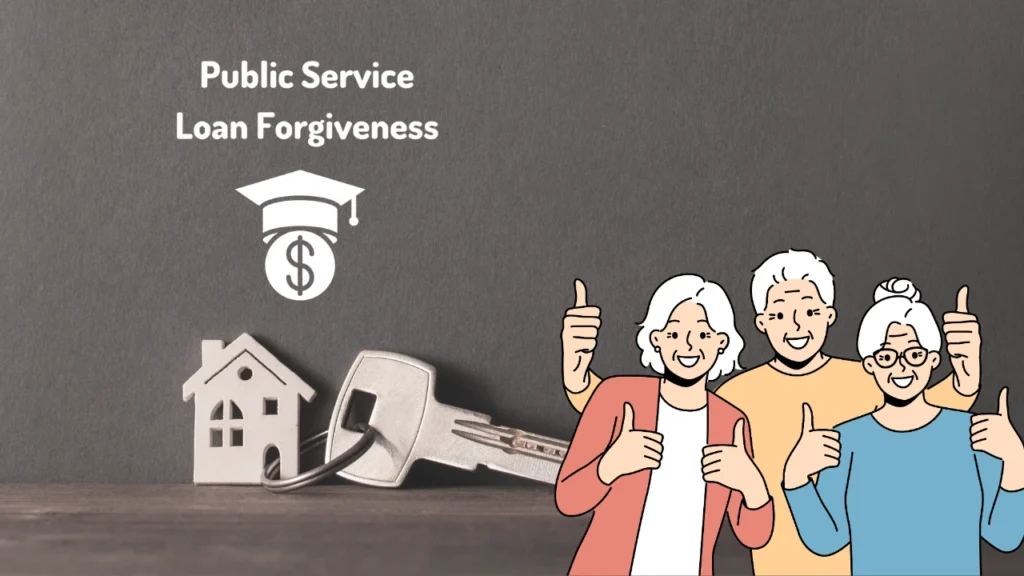Public Service Loan Forgiveness Explained.If you work in public service and have federal student loans, Public Service Loan Forgiveness (PSLF) could wipe away the remaining balance after you have made enough qualifying payments.
It is a powerful program, but the rules and paperwork can feel confusing. This blog will provide detailed information about PSLF such as who qualifies, which loans and payments count, how to apply, common pitfalls, and simple steps to keep your application on track so that you can clear all your doubts related to the benefits.
Public Service Loan Forgiveness Explained: Who Qualifies & How-Overview
| Article on | Quick Facts |
| Who Qualifies | Full-time employees of government, military, or qualifying nonprofits (501(c)(3)). |
| Eligible Loans | Only Direct Loans qualify; FFEL/Perkins must be consolidated. |
| Payments Needed | 120 qualifying monthly payments. |
| Repayment Plans | Income-Driven Repayment (IDR) or 10-Year Standard Plan. |
| How to Apply | Submit the PSLF Form (best via PSLF Help Tool) and certify employment annually. |
What is PSLF?
PSLF is a federal program that forgives the remaining balance on Direct Loans after you make 120 qualifying monthly payments while working full-time for a qualifying public service employer. The program is run by the U.S. Department of Education and is intended for people working in government, many nonprofit jobs, and other public-service roles.
Who counts as a qualifying employee?
Qualifying employment is about who you work for which is not exactly what you do. You generally qualify if you work full-time for:

- U.S. federal, state, local, or tribal government (including military service).
- A not-for-profit organization i.e. tax-exempt under Section 501(c)(3).
- Some other not-for-profit organizations that mainly provide qualifying public services.
Full-time typically means a weekly average of at least 30 hours. If you work multiple qualifying jobs, hours can sometimes be combined. Special rules apply for teachers and for higher-education faculty.
Which loans and repayment plans qualify?
Eligible loans: Only loans made under the William D. Ford Federal Direct Loan (Direct Loan) program qualify for PSLF. Other federal loans (like FFEL or Perkins) can become eligible if you consolidate them into a Direct Consolidation Loan.
Repayment plans: Qualifying payments must be made under an income-driven repayment (IDR) plan or the 10-year Standard Repayment Plan. IDR plans base your monthly payment on income and family size and are often the best option for making lower payments now while building toward forgiveness.
Parent PLUS loans: A Direct PLUS loan to a parent is technically eligible for PSLF, but to use an income-driven plan, it must first be consolidated into a Direct Consolidation Loan.
What counts as a qualifying payment?
A qualifying monthly payment must be:
- Made while you were employed full-time by a qualifying employer for that month,
- Under a qualifying repayment plan, and
- For the full amount due as shown on your bill.
How the PSLF employment certification process works (and why you should do it yearly)
To track progress toward forgiveness, submit the PSLF form to certify each period of qualifying employment. The easiest route is the PSLF Help Tool as it:
- Lets you check whether your employer is already in the Department of Education’s employer database,
- Helps prepare and sign your PSLF form, and
- Requests your electronic certification (DocuSign) of the employer and sends the completed form to the Department of Education for processing.
If your employer is not in the Help Tool, you can submit a paper (manual) PSLF form and have your employer certify it on paper. Keep copies and upload them to your StudentAid.gov account as backup. If an agency is not yet registered in the Help Tool, the verification process can take time sometimes up to a year.
State-level employer responsibilities (Washington example)
Some states have extra rules to help employees access PSLF. For example, Washington state requires its agencies to:
- Provide annual PSLF notices to employees, and give notices at hire and at separation,
- Send a recertification reminder one year after the last certification date,
- Designate a PSLF point-of-contact in the agency, and post an agency EIN and PSLF contact info so employees can submit forms electronically, and
- Keep completed forms for a set retention period.
Quick checklist
- Confirm your loans are Direct Loans (or consider consolidating non-Direct loans).
- Enroll in an IDR plan if needed.
- Use the PSLF Help Tool or get the PSLF form and submit it with employer certification.
- Certify employment every year and whenever you change employers.
- Keep proof of payments and copies of certified forms.
- If your employer is not in the Help Tool, submit a manual form and ask your employer to help register for the future.
Final thoughts
PSLF can be life-changing for people who dedicate their careers to public service, but getting forgiveness takes planning and paperwork. Certify your employment regularly, keep good records, and don’t be afraid to ask your employer for their EIN and PSLF contact so you can use the Help Tool.
For federal details and the official PSLF form, check StudentAid.gov and use the PSLF Help Tool. If you work for a Washington state agency and need state-specific employer guidance, you can reach out to your agency’s PSLF contact or the state’s OFM PSLF email for help.
| Home Page | https://sbbarristers.com/ |
FAQs for Public Service Loan Forgiveness Explained
Full-time employees of government, military, or eligible nonprofits (mainly 501(c)(3)).
Income-Driven Repayment (IDR) plans or the 10-Year Standard Repayment Plan.